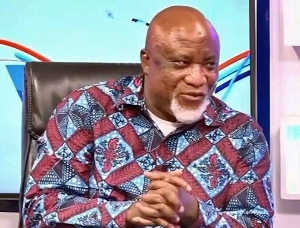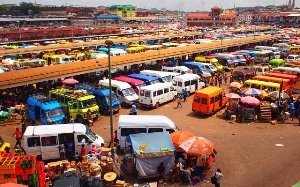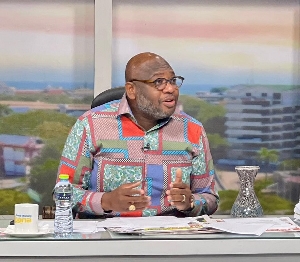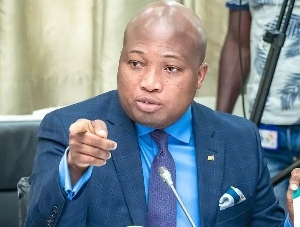 The second batch of the students will get enrolled on November 8
The second batch of the students will get enrolled on November 8
The double-track system took off on September 11, 2018, with the track green students enrolling for the 2018/2019 academic year under the second phase of the Free SHS concept.
The track gold students, on the other hand, are to get enrolled on November 8, 2018.
The double-track system is to afford the government with the capacity to deal with a large number of placed candidates who will hitherto not have had the opportunity to access Free SHS as a result of lack of classroom space.
The double-track system, which commenced with the 2018/2019 academic year, is a fallout of the Free SHS policy which is in its second year of operation.
System not permanent
The government has indicated that the double-track system is not going to be a permanent feature of our second-cycle educational system.
The double-track system, we are told, is to last between five and seven years to allow the government ample time to address the accommodation challenges in the various SHSs after which the 400 out of the 698 schools which are currently running the double-intake system will revert to the trimester school calendar of the SHS.
In-depth public education
Quite a number of the citizenry, mostly parents/guardians, have expressed reservations about the system, perhaps not out of sheer antagonism to the system, but rather lack of in-depth understanding of the workings of the double-track system.
That is why some of us would like to fill that gap supposedly.
Workings of the system
Each of the tracks, either green or gold, will have 81 days per semester. Each track is running two semesters for the academic year.
Class size, which have been a major challenge, and which is one of the cardinal reasons for the institution of the double-track system, will be trimmed to acceptable standards, perhaps 40-45 students in a class.
Teaching hours had been increased from six hours per day to eight hours under the double-track system.
As a result of the increase in the instructional hours from six hours to eight hours per day, teaching hours have also been increased from 1,080 hours per week (in the current trimester system) to 1,134 hours per week in the double-track system (an increase of 54 hours per week, which is very significant).
Teachers who handle each of the tracks (either green or gold) will not be denied their holidays. What it means is that the teachers in each of the 400 public SHSs running the double-track system will go on vacation with the students in their tracks.
About 9,000 teachers are to be engaged, as a matter of urgency, to augment the teaching strength in our public SHSs as a result of the double-track intake system. The heads of the public SHSs who will have to superintend over both tracks will receive some allowance to motivate them.
41-day vacation period
One of the features of the double-track system which is giving parents/guardians some sort of worry has to do with the 41-day vacation period.
Quite a number of parents/guardians believe that the length of the vacation period will make their wards wayward and perhaps forget whatever they learnt at school during the 81-day semester track system.
The concerns are legitimate though, but this is where the role of the Parent-Teacher Association (PTA) and the issue of extra classes come in.
Extra classes
The Ghana Education Service (GES) has stated that it is not government policy to organise vacation classes for students.
It is the parents’/guardians’ duty and responsibility if they so wish, and the government is not going to take that away from them.
According to the chair of the GES Council, Mr Michael Kenneth Nsowah, PTAs are private organisations/entities formed by parents and guardians of students of schools, hence the PTAs have the autonomy to do their work without any interference whatsoever from school heads.
Mr Nsowah further intimated that the PTAs, however, remained a body supporting the efforts of the Ministry of Education (MoE) and the government at large.
Therefore, nothing should stand in the way of the PTAs collectively or parents/guardians to get extra classes for their wards, if they so desire.
Innovativeness by MoE
The Ministry of Education (MoE) has shown innovativeness in its response to the challenges of the Free SHS policy, the teething challenges with the policy notwithstanding.
The Free SHS, no doubt, has witnessed over 30 per cent increase in the population of new entrants over the previous year; per the available statistics for the 2018/2019 academic year.
Therefore, the need for finding innovative ways of addressing that challenge, which gave birth to the double-track system, was timely.
Cut-off point
Had it not been the innovative double-track system put in place by the MoE, quite a number of the hitherto qualified BECE candidates would have been denied the opportunity of accessing second-cycle education through no fault of theirs, since some of the junior high schools are poorly resourced in terms of logistics and the full complement of teachers. Definitely, the cut-off point for admission would have been an issue.
Perhaps, aggregate 24 or better would have been considered; and that would have made nonsense the axiom that “Education is a right and not a privilege.”
SHSs not on the double-track system
The impression should not be created that the 298 SHSs that are not running the double-track system are the undersubscribed or the less-endowed schools.
No! It is believed that perhaps they are the schools that have enough classroom accommodation and their teaching staff strength could cater for the full complement of students posted to those schools.
Therefore, there was no need to run the double-track system in those schools, hence those schools will still run the trimester system.
On the flip side, the MoE must ensure that there is a budgetary allocation for the immediate recruitment of the about 9,000 teachers needed to make the double-track intake system work satisfactorily.
Similarly, the infrastructural and other logistical challenges that have bedevilled the Free SHS policy need to be addressed, so that all the 698 public SHSs could revert to the trimester system in the stipulated seven years’ time.
Serious concern
It is finding space in the public domain that those who have applied to teach in the double-track system are being asked to pay an online registration fee of GH¢5.00 coupled with GH¢40.00 for aptitude test.
The test is to cover the areas of English, quantitative, supervisory judgement and logical reasoning.
It is hoped that the above information are not true. If it happens to be true, then, “whither are we drifting” in our educational enterprise? Who is charging the fees? Is it the NTC who has the mandate to license, register and employ teachers or the sector agency, the GES?
Similarly, the question to ask the NTC is, are the university graduates who have completed their national service and being asked to apply to teach in the double-track system exempt from the teacher licensure exam?
Is it not the position of NTC that starting from the 2018/2019 academic year, it is only teachers who are licensed who will be permitted to teach in our pre-tertiary educational institution and that is why those who wrote the licensure examination are hoping to be posted in October 2018?
We need sanity in our pre-tertiary educational front.
The writer is a former Headmaster, Okuapemman School and former National Secretary of CHASS.
- Free SHS: Every sensible person will opt for a review – Prof. Kwabena Frimpong-Boateng
- I hate Free SHS more than I hate Satan - Blakk Rasta
- 3 Free SHS graduates emerge best WASSCE students in West Africa
- Ghanaians react to viral video of pupils sitting on blocks to study in Sawla-Tuna-Kalba
- Some students sleep on the floor, others study with plastic chairs – Wey Gey Hey senior prefect laments
- Read all related articles












